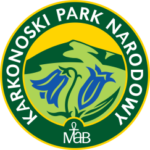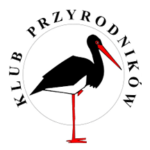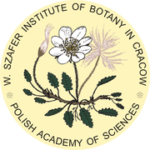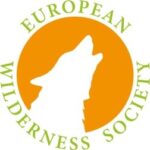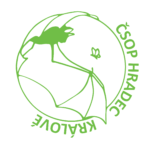- About the project
- Apollo butterfly
- Project area
- Activities and outputs
- Experience and coop.
- Media coverage
- Photo gallery
- How to help
BASIC INFO
Project name: Conservation of Parnassius apollo in Poland, Czechia and Austria
Project acronym: LIFE Apollo2020
Project number: LIFE20 NAT/PL/0151
Project scheme: NATURE
Project duration: 1 September 2021 – 31 March 2028

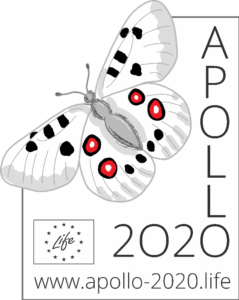
Partner structure
LIFE Programme
The LIFE Apollo2020 project connects researchers, protected areas, conservationists, and other relevant stakeholders to address the conservation of the endangered Apollo butterfly in the continental bioregion of Austria, the Czech Republic and Poland.
Objectives of the project:
- Recovery of populations of the Apollo butterfly (Parnassius apollo) in the 3 functional areas „Sudetenland“, „White Carpathians“, and „Austrian Alps“
- Establishment of three new butterflies breeding stations, where Apollos are bred for reintroduction into the wild
- Establishment of at least 40 „stepping stones“ to support Apollo migration corridors between the functional areas
- Increase in protection for Apollo’s breeding and feeding habitats
- Developing a comprehensive species conservation strategy at the continental level of the bioregion, including a Breeding Manual and a Species Action Plan
- Raising awareness of and social commitment to the conservation and maintenance of Apollo butterfly habitats by creating „Apollo Gardens“ and organizing local community events

About the project
Insect decline is nowadays one of the most neglected, yet critical, conservation problems. Data from sources such as the European Red List of Butterflies clearly indicate negative trends in the number of insects in Europe, in fact over 30% of taxa show regression. For example, the European Grassland Butterfly Indicators show there has been a 39% decline in grassland butterflies since 1990. This has major negative impacts not only on plant pollination but also on the survival of amphibians, reptiles, birds, plants, mammals, and of course also us—humans.
Because of its attractiveness and high vulnerability to extinction, the Apollo butterfly (Parnassius apollo) acts as an "umbrella species" that will help to protect whole ecosystems and mosaics of different habitats that will benefit other species.
Although LifeApollo2020 is taking place in the Czech Krkonoše Mountains under our auspices, other organisations within the JARO conservation group are also actively involved. At the same time, we are also implementing the project in close cooperation with other governmental (like national park authorities) and non-governmental organisations from Poland and Austria, and in wider cooperation with dozens of other partners, including professional scientific societies, the Agency for Nature and Landscape Protection, the Slovak State Nature Conservation Agency, several protected landscape areas administrations, landowners, schools, companies and many others.
Apollo butterfly
This remarkable butterfly of the Papilionidae family and Parnassius genus is one of the most endangered in Europe, with a 20 – 50% decline in abundance over the last 25 years. As a result, Apollo was the first insect to be included on the CITES list. In Europe it is classified as "vulnerable" by the IUCN, in the Czech Republic as "extinct".
It used to occur in fragments in many parts of the Czech Republic, especially in the mountains and foothills. It became extinct in the 1930s at its last known locality near Štramberk. This is mainly due to large-scale monoculture-based agriculture, intensification and use of plant protection products, conversion of meadows into arable land, afforestation, and natural succession due to abandonment of use or excessive grazing. In 1986, butterflies from Slovakia were introduced near Štramberk, and a weak population has survived in several localities in the area until today.
It is a heliophilous species, which means that the adult butterflies are active mainly during the period of greatest sunshine. They fly in a slow, fluttering flight low to the ground, often perching and sucking nectar. When disturbed, the perching butterfly spreads its wings rapidly and intimidates enemies by revealing the red eyes on its hind wings. Its life cycle is monogenerational, with adults flying from mid-June to early August. The caterpillar's food plants in Central Europe are mainly Sedum maximum and S. album.
Project area
Our six-year project focuses on helping the most endangered Central European populations and their recovery in three main areas: the Sudetenland (on the Czech and Polish side of the Krkonoše Mountains), the White Carpathians, and the Austrian Alps.
Sites in the Krkonoše Mountains
In these sites (30 ha in total) we will try to create an optimal habitat with blocked succession and potentially also grazing. Landscaping will be generally carried out by using heavy equipment. Work will include cutting self-seeding shrubs and trees, grass cutting, biomass removal and construction of small walls. We plan to help spread native host plant species such as Sedum maximum, and possibly Sedum album and Sedum sexangulare.
The project will prepare data for the assessment of the suitability of the habitats around a quarries and within the whole territory of the Krkonoše Mountains on the Polish and Czech side.
Activities and outputs
Breeding farms will be established in each country for Apollo reintroduction to the chosen sites. At the same time, we will try to help with active conservation of this species in Poland, Slovakia, Austria, and possibly also in Germany or France, etc. An integral part of the project is genetic research on the species and efforts to preserve the (central) European gene pool as much as possible.
Our efforts to restore natural conditions represent a fundamental importance, so that our attempt at Apollo reintroduction will be worthwhile. Therefore, we are facing the challenging task of removing woody plants, revitalizing the formerly extremely species-rich meadows, and using traditional methods of careful human management of the landscape, including the use of suitable grazing method, as well as other key measures to substitute original natural processes and processes that will enhance the quality of selected habitats for a range of other rare and threatened species.
In addition, we will try to connect the areas of Apollo's occurrence with "stepping stones" (transit habitats with plant compositions that support the species) created to support migration corridors. "Apollo gardens" will be created to promote the project and environmental awareness, and local community events such as field trips and lectures will be held. A comprehensive strategy for the conservation of the Central European Apollo butterfly population will also be developed, including a Species Action Plan and Breeding Manual.
Experience and cooperation
ČSOP Hradec Králové is part of the JARO Conservation Group, which has been studying and monitoring butterflies in the Czech Republic since 1972 and abroad since 1991. Some members nowadays also officially represent the Czech and Slovak Republic in Butterfly Conservation Europe. Thanks to our rich experience in habitat care, rescue breeding and repatriation of butterflies, we are successfully restoring populations of some species that originally died out on the sites. This applies to e.g. Chazara briseis, Hyponephele lycaon or Melitaea didyma. We also collaborate on active conservation (using individuals from rescue breeding) of Minois dryas, Euphydryas maturna and Polyommatus dorylas and a number of other extremely endangered species. Since 2012, we have been actively involved in the protection of the largest population of the Apollo in Slovakia, and since 2019 we have helped to secure selected populations in the Tyrolean Alps, where we have restored 15-20 ha of alpine butterfly hillsides (more at www.jaro-at.at).
We always strive to work closely with the best experts, whether from academic departments, including entomological or botanical institutes, a number of universities, scientific societies including the Czech Entomological Society or the Society for Butterfly Conservation, state nature protection from the Ministry of Environment, through national park and protected area administrations to local environmental authorities, and even in an international context. The LifeApollo2020 project will therefore further deepen cooperation between researchers, protected areas, conservationists, the public, and other relevant stakeholders.
How to help
The project is 60% funded by the European Union, the rest is provided from its own resources, co-financing by our partners and volunteer work. In the future, there will also be the opportunity to participate on a volunteer basis.

Contact:
Bc. Tereza Macečková -
project coordinator
info@skupinajaro.cz
+420 608 271 234
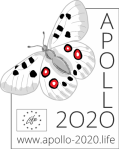
Co-funded by the European Union. Views and opinions expressed are however those of the author(s) only and do not necessarily reflect those of the European Union or CINEA. Neither the European Union nor the granting authority can be held responsible for them.


